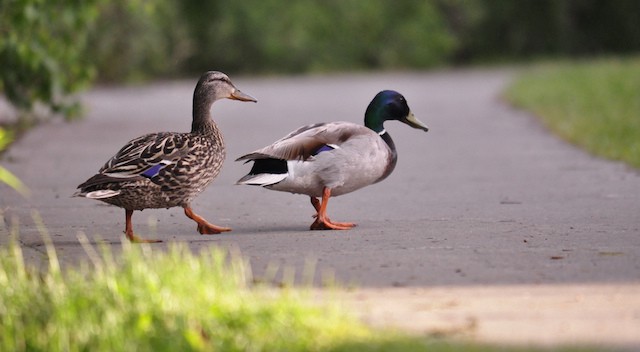Your Clitoris Is the Size of a ‘Medium Zucchini,’ and Other Vagina Facts You Didn’t Know
by Menno Schilthuizen

Here’s a biology pop quiz question. What is the average size of a clitoris in a human female?
A. the size of a chickpea
B. the size of a mini pickle
C. the size of a medium zucchini.
Unless you’ve been paying particularly close attention to the gynecological literature, you’re probably not going to say C. And yet that is the correct answer. Sure, the externally visible part of the clitoris is puny, but that is literally the tip of an iceberg that extends deep beneath the pubis, five inches down either wall of the vagina, consists of six separate parts, and carries more nerve endings than the penis.
If you didn’t know this, you’re not alone. Although successive anatomists have published detailed descriptions of the organ over the past 350 years, this knowledge has just as frequently been suppressed, trivialized, and forgotten. Why? Because the great authority Vesalius said a clitoris did not and should not exist, except in hermaphrodites. Or because Freud told us clitoral stimulation was an infantile pleasure, to be replaced by proper vaginal fun later upon maturity. Or simply because it got in the way of clitorectomy campaigns. Even today, the rate of “cliteracy” is still dismal.
But human females are not the only victims of the lack of scientific interest in the female private parts. In my book Nature’s Nether Regions, I portray the relatively young field of biology that studies the evolution of animal (and human) vaginas, penises, and other genital organs. And here, too, male genitalia have been stealing the limelight. Take ducks, for example. Whereas most birds mate by pressing their cloacas against each other, ducks are among the few types of bird where the males have an actual penis. And these are as different among different duck species as their plumage is. The harlequin duck has a straight snub-tipped one; the mallard a long coiled one, like a twisted pretzel; and the Argentine lake duck a 17-inch spiny one.
Initially zoologists thought the vaginas of those ducks were all the same — straight tubes — and that different species had different penises because, like colored feathers, they evolved according to the females’ preference for the feel of particular adornments on their mates’ members. But then, 10 years ago, ornithologist Patricia Brennan had a better look at the ducks’ vaginas, and, after centuries of zoologists studying ducks, found something no one had noticed before: the vaginas of different duck species are all different as well, and often shaped in such a way to make it harder for the male to penetrate her. Ducks are notorious rapists, and a female mallard, for example, can refuse a male entry simply by keeping the muscles in her clockwise-coiled vagina taut, so his counterclockwise willy cannot enter. In other words, the duck penis and vagina may have co-evolved in a kind of sexual arms race.
For as long as biologists focus on the male genitalia, such meanings remain hidden. Granted, in many animals it is much easier to study the male organs (which often stick out prominently) rather than the soft pliable female ones, literally invaginated and cloaked in layers of skin and bone. Feminist biologist Patricia Adair Gowaty has lamented that without proper study, the genitalia of females may seem “more common than elaborate, more utilitarian than bizarre,” but closer inspection often reveals a level of sophistication that has largely gone undetected. In the case of those ducks, the evolutionary sophistication allows the female to retain the upper hand in her reproductive decisions. When she is being violated by a band of drakes, it may seem that she has no choice, but by playing her internal valves, she can make the males reproductively dance to her tunes instead of the other way around.

A similar function may be served by the clitoris. We have come a long way since the dark age of the 1960s, when the female orgasm (and sometimes even the clitoris) was hailed as a uniquely human feature, and Desmond Morris wrote in The Naked Ape that it had evolved for “the immense behavioral reward it brings to the act of sexual co-operation with the mated partner.” We now know that almost all mammal females have clitorises and most experience some form of orgasm. But does it have a function? Philosopher Elisabeth Lloyd thinks not. In her book, The Case of the Female Orgasm, she argues that it is a functionless vestige of the male orgasm, present in women simply because men and women share much of their wiring. For the same reason that males have nipples, says Lloyd, females have orgasms: because they serve a purpose in the opposite sex.
You’d think that decades of genitalia research must have come up with evidence for or against Lloyd’s theory, but data on the precise workings of human female genitalia are frustratingly scarce. Here’s what we know: a British study in the 1970s, in which one woman was rigged with a wireless pressure gauge in her uterus, showed that when she climaxed, her uterus developed a lower pressure, essentially sucking up the man’s sperm. And another British study, carried out in the 1990s, found that if a woman does not have an orgasm, or if she has it more than a minute before her partner ejaculates, most of his sperm is “dumped” by her vagina (it simply flows out). However, if she climaxes during or shortly after him, most of his sperm is sucked up into her uterus.
So perhaps the female orgasm is another way for a woman’s body to make or break a man’s chances on fatherhood, even while copulation is already under way. There is support for this from studies on primates: female macaques are more likely to have an orgasm if they are mounted by a high-ranking male.
Now this may seem like solid evidence against Lloyd’s idea, but on closer inspection the data are very flimsy: the pressure gauge study involved just a single woman; the other study involved 11 volunteers, but one (clearly highly motivated) was responsible for 70 percent of the data. And we have zero information on how the chances of pregnancy really are affected by the woman having an orgasm at the “right” moment.
Given the fact that in the past five years alone, a few hundred scholarly articles have appeared on the female orgasm, let alone the thousands of feature articles in the glossies, it is rather sad to establish that we know virtually nothing on why it exists. That — along with the fact that in many anatomy textbooks, the penis gets a chapter while the clitoris gets a paragraph — should be enough for evolutionary biologists and gynecologists to prick up their ears and start a liaison.
Photo via nunymare/flickr.
Menno Schilthuizen is an evolutionary biologist and science writer at Naturalis Biodiversity Center and Leiden University in The Netherlands. In his new book, Nature’s Nether Regions (out today, Viking) he explains what the sex lives of bugs, birds, and beasts tell us about evolution, biodiversity, and ourselves.